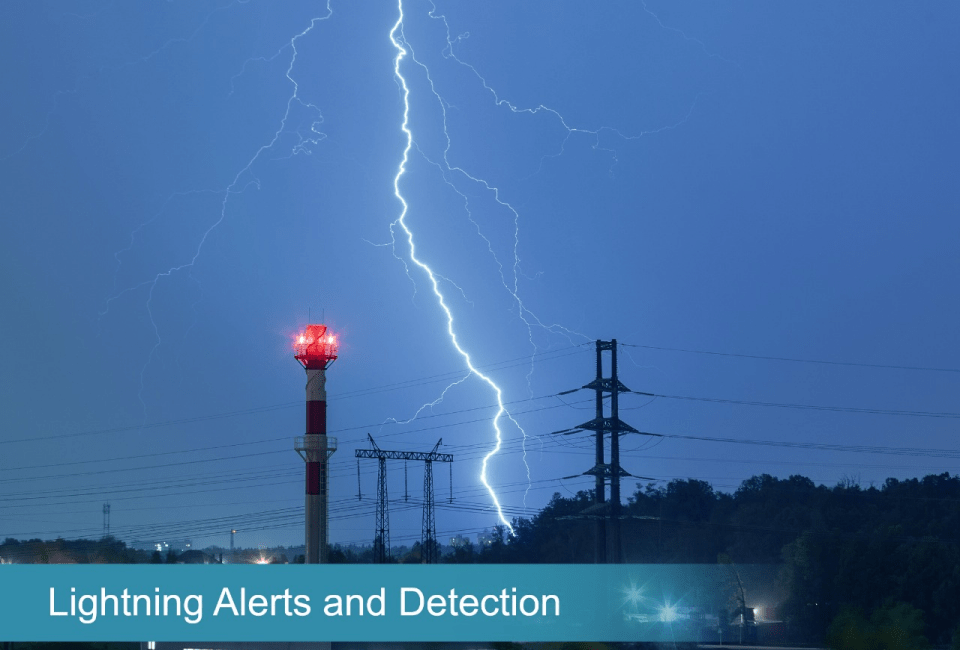
Weather Advisory For Agriculture To Increase Farmer’s Income
October 14, 2022
What Are Support Services For Cultivation?
October 14, 2022The technique of detecting lightning produced by thunderstorms is known as lightning detection. After detecting lightning, communicating it promptly and adequately is called a lightning alert. There are 3 fundamental methods for detecting lightning:
- Acoustic
- Optical
- Electric Fields
These techniques detect lightning differently; some are more complex than others. Acoustic lightning detection, for example, refers to hearing thunder to detect lightning. Because we don't want consumers or companies to make plans based on this detection approach, we don't consider it viable.
What is Lightning?
A lightning strike occurs when an electrical discharge occurs between a cloud and the ground or within a cloud. This intense and quick electrical discharge produces a dazzling flash and thunder. Thunder is the sound made by lightning flashing and warming the air.
Lightning begins with the formation of an electric current in a cloud. When the earth is heated, the air just above it warms up. As warm air rises, the cloud grows larger and larger. However, the cloud isn’t warm. Temperatures are below freezing at the tops of the clouds. It’s so cold that the water vapor freezes!
A thunderstorm arises when hot and cold air collide. As they travel around in the cloud, many microscopic bits of ice collide with one another. This is the start of a lightning bolt. When these particles collide, they generate an electrical charge.
As the cloud accumulates electrical charges, lighter positively charged particles develop near the cloud’s surface. The heavier negatively charged particles sink to the bottom of the container. When both charges get sufficiently extensive, lightning strikes between them.
How Does the Lightning Detection and Lightening Alerts Work?
The lightning alert and detector system employs a radio that captures lightning at 500 kHz and detects a specific radio signal pattern. The electrical “spark”, or lightning, generates the lightning signal pattern. Erroneous lightning strikes can be seen using the lightning detector system. Many distinct artificial sources can artificially create the same signal “spark”. Examples are radio towers, power plants, garage door motors, a car's ignition system, starting an electrical motor, switching a light switch, and other sources.
Although the system uses filters to identify and remove as many faults as possible, some “erroneous” signals still pass through. If the filter system is more robust and perceptive, it will be less sensitive to lightning and may miss short-distance strikes.
The lightning detector system will not offer an exact count of actual lightning strikes or distance estimations. The method will be pretty accurate in most circumstances, but there will always be a few exceptions.
Limitations of Lightning Alerts and Detection
Each lightning alert and detecting technology has its own set of restrictions. These are some examples:
- To find a flash with an acceptable margin of error, a single ground-based lightning network must detect it with at least 3 antennae. This frequently results in the rejection of cloud-to-cloud lightning since one antenna may identify the flash’s position on the beginning cloud and the other on the receiving cloud. As a result, ground-based networks tend to underestimate the number of flashes, particularly during the start of storms where cloud-to-cloud lightning is common.
- Ground-based systems that employ several locations and time-of-flight detection methods require a central device to collect strike and timing data to determine position. Furthermore, each detecting station must have a precise time source for the computation.
- A mobile detector may confuse a faint lightning flash localized to a powerful one further away because it uses attenuation rather than triangulation.
- Space-based lightning networks have none of these constraints. Still, the information they offer is sometimes several minutes old when publicly available, making it unsuitable for real-time applications like aviation navigation.
Conclusion
Lightning strikes will continue to endanger human lives indefinitely. Unfortunately, we cannot tackle lightning strikes. However, we can take precautions and seek shelter with timely lightning alerts near us.
A reliable Lightning Early Warning System is applicable in a variety of ways. Vyomet, a weather prediction and warning app developed by Hydenmet, is now available. As a result, it might save you from many unnecessary losses in terms of money and health.




